Information on this page is for customers in
{{ town-name }}
New Hampshire News
Blog
Speaking for the Trees – Part 2
Jul 25, 2025
 vegetation management
employees
vegetation management
employees
This is Part 2 of our profile on Eversource arborist Bob Allen. Be sure to check out Part 1.
And now for something completely different
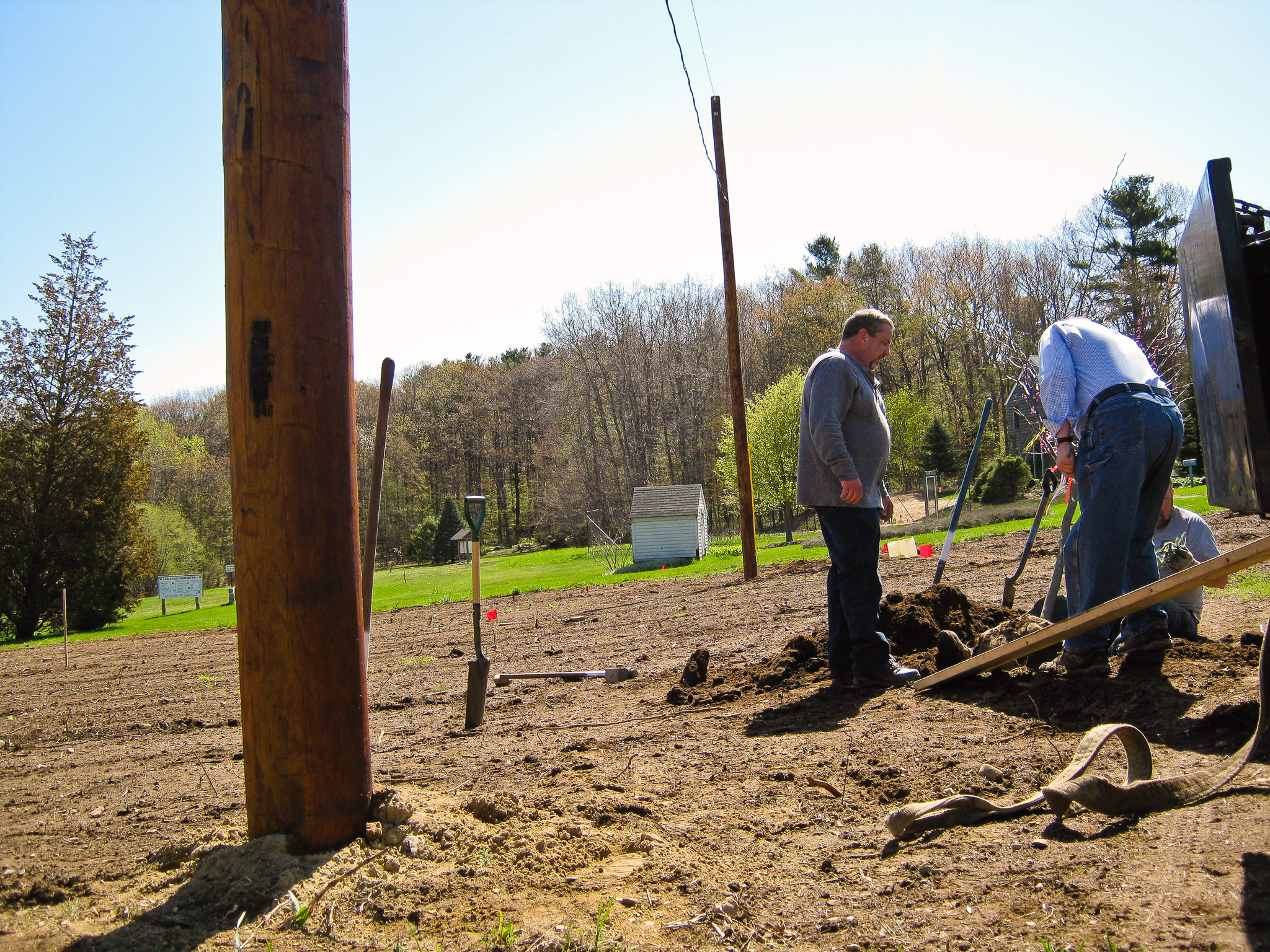
After a 2012 wind storm wiped out a grove of spruce trees at NH’s Urban Forestry Center in Portsmouth, Bob Allen suggested they fill the space by building a “utility arboretum.” It was a completely new idea at the time. Arboretums are a collection of trees with various attributes, like a botanical garden. Bob’s idea for a utility arboretum would be more of a demonstration site, a collection of trees under a certain height, with utility poles and wires going through it. “The goal is to show trees that would work in concert with our system,” said Bob. “It gives our customers, landscape architects, students, tree wardens, and government officials, the opportunity to see what a specific tree looks like in relation to the wires during all four seasons.”
The idea is that if you have a tree that only gets 30 feet tall, it’s not going to cause an outage in a storm, and it’s not going to need to be trimmed. “So the long-term benefit is less maintenance, which saves money for all of our customers,” said Bob. “And the trees look better because they’re in their natural shape.” Bob’s team planted 25 trees at the Portsmouth arboretum, and 13 years later, all of them look great and none have grown into the overhead wires.
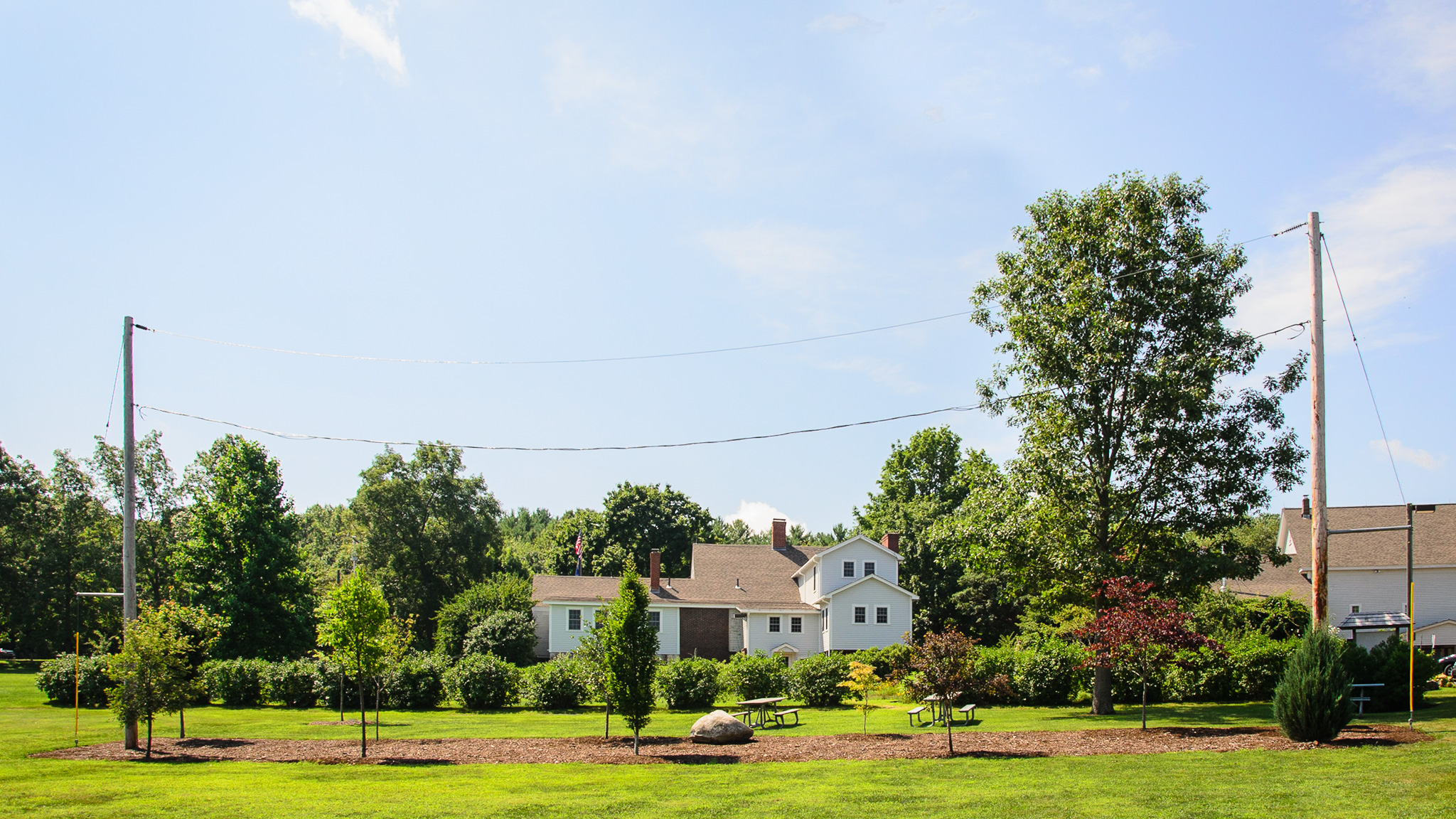
After Northeast Utilities merged with NStar and became Eversource, Bob’s new boss looked at the success of that first arboretum and tasked him with bringing the concept to MA and CT. Eversource’s second utility arboretum was created on the campus of UMass Amherst, at the Agricultural Learning Center where first Bob studied trees. “The beauty of that one is that because it was de-energized, we were able to have apprentices from our line department build the poles and wires, and UMass students helped out with planting the trees,” said Bob.
The right tree in the right place
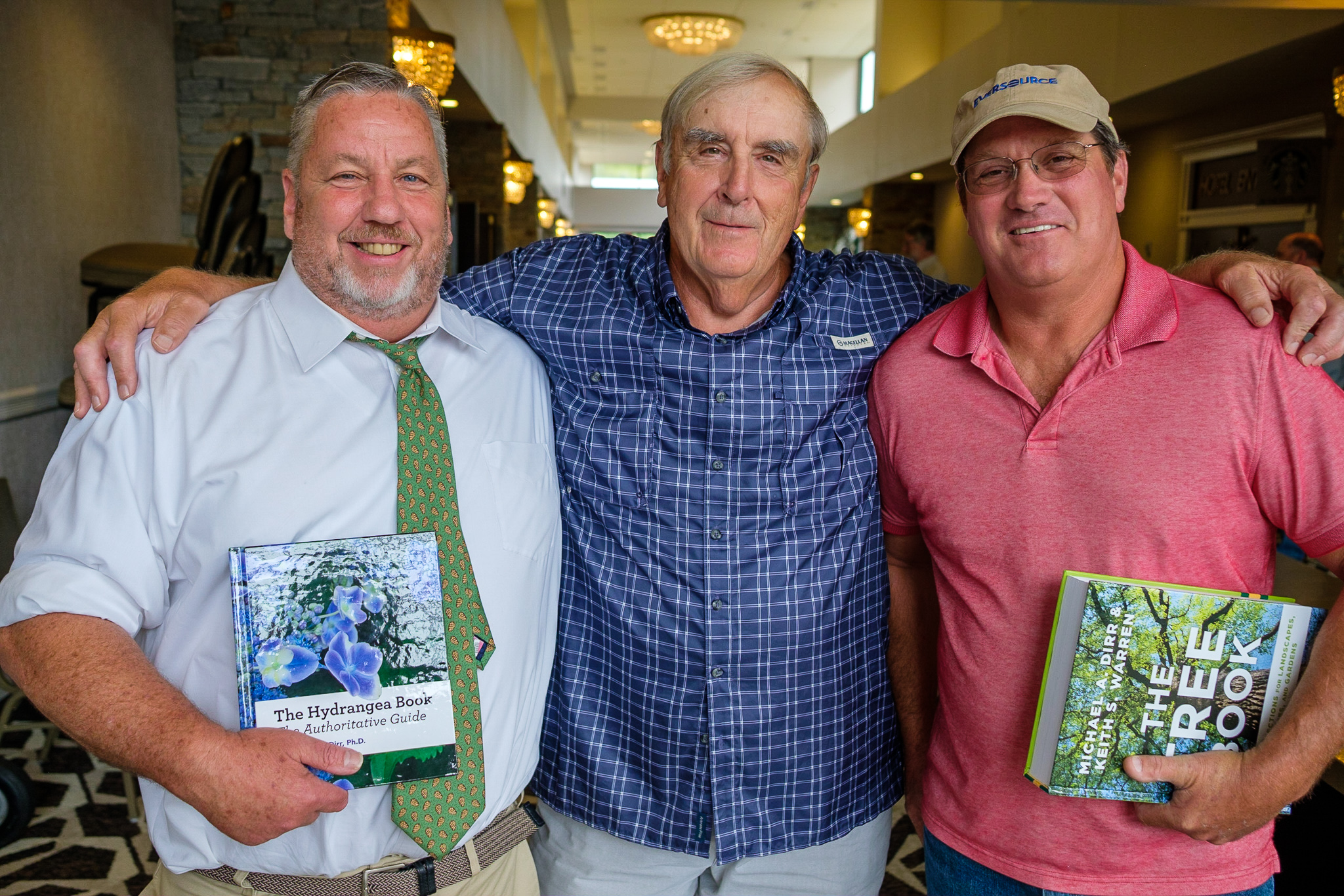
While working on the UMass arboretum, Bob became friends with one of his heroes, the renowned horticulturalist and professor, Michael Dirr (pictured, between Bob Allen and arborist Brian Salas). To complement the utility arboretums, Bob had an idea for a poster of 30 trees that were under 30 feet tall so that they could be planted under power lines. He worked with Dr. Dirr to help select a variety of appropriate trees for the New England climate. Sean Redding was impressed by the thought and care that went into the selection. “You know, people can only buy what’s available, and the growers are only going to grow what people buy,” Redding explained. Bob understood how individual property owners choose trees and where they buy them. Part of the development of the 30 Under 30 poster was making sure the varieties weren’t hard to find at home stores and nurseries. “Bob worked both ends of the problem,” said Redding. “It wasn’t only giving information to our customers; by working through his connections and relationships, he was able to get the information to the people growing and selling the plants.”
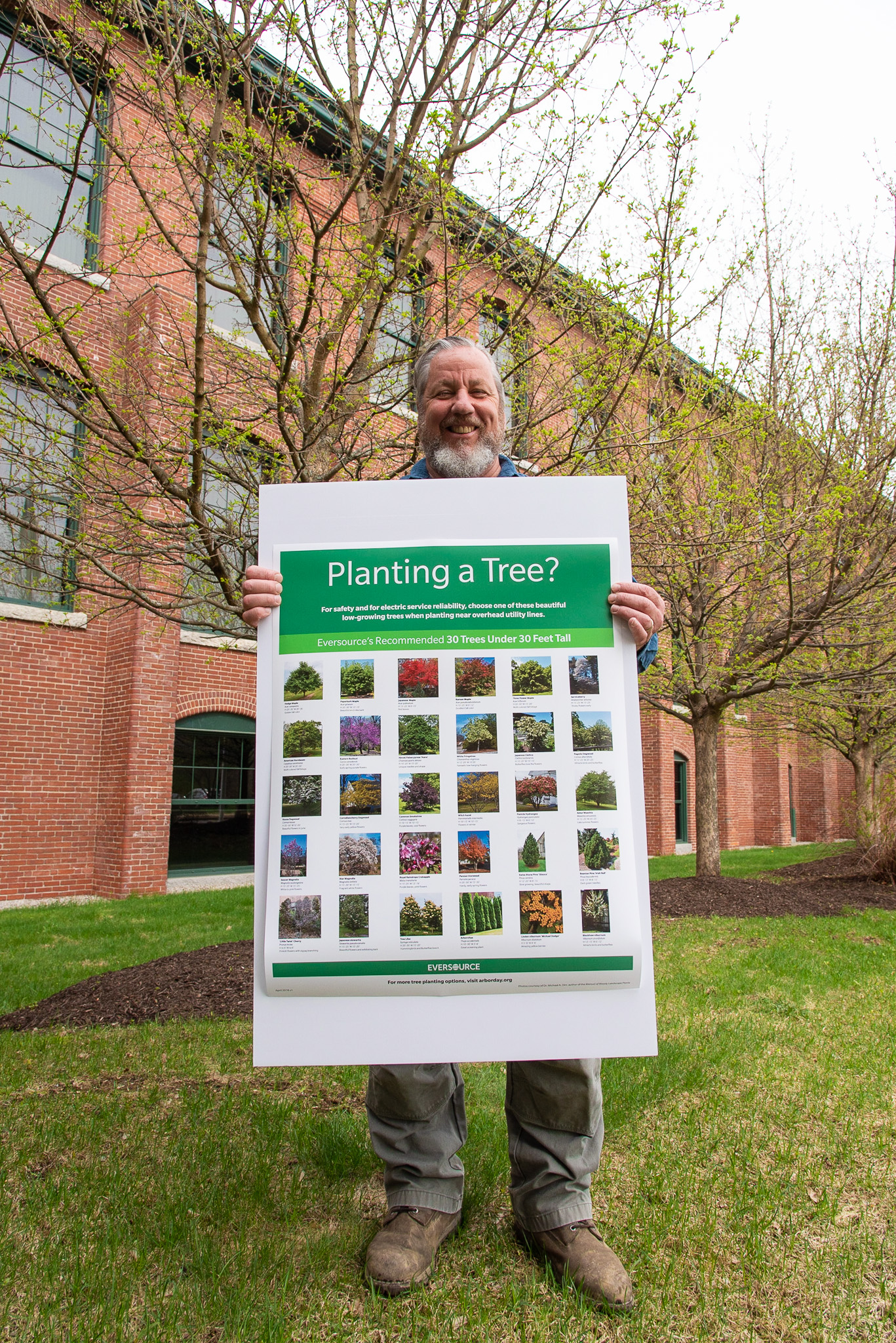
“One of the nice things about the utility arboretum is we can highlight trees that most folks aren’t aware of,” said Bob. He continues to maintain relationships with garden centers in New England and growers out in Oregon and Washington to make sure they’re supplying the saplings our customers need. “They sell lots of trees, and we’d like to get them to sell the trees that we think are most important to be under the wires, and that’s really worked well.” It’s a long-range plan. The investment in time is probably 4–10 years for some species before they can even get the saplings to the market. But Bob has his eyes on the future. “We’re looking at generations beyond us, because we know there’s value in every one that we plant.”
Unlike the Ents in Lord of the Rings, trees in our world typically stay in one location for life. “‘Plan Before You Plant’ is an expression that I live by every day, partially because it is tattooed on my arm,” joked Bob. After the 30 Under 30 poster and Plan Before You Plant campaign was launched, Bob helped create another utility arboretum at Eversource’s Berlin, CT headquarters, and then a fourth at an Eversource facility in Hooksett, NH.
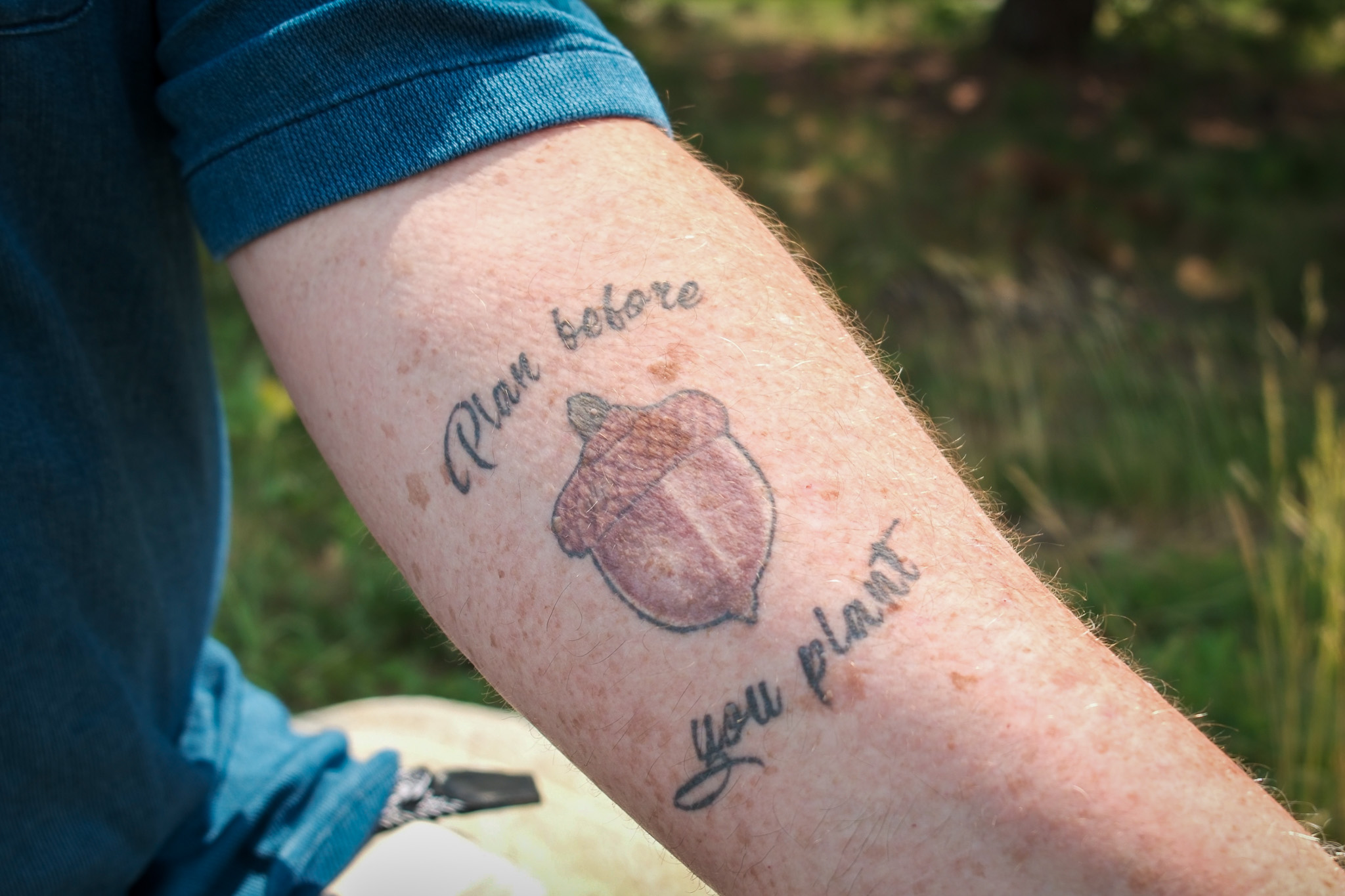
The latter site has more than 70 varieties of trees planted under live power lines, with an adjacent pond and pollinator garden. Bob coordinated with local contractors who donated their time and services, along with the trees, a walking path, and stone benches. “Folks can come out here at any time of the day,” he said. “You get to be with Mother Nature, but be right across the street from the office and learn a little bit about the trees.” So far as he knows, Eversource’s four utility arboretums are still the only ones in the nation.
The tree ambassador
In Bob’s final position, as Manager of Coordination, Strategy, and Innovation for all of Eversource’s service territory, he built a cohesive team to transform ideas into reality—everything from enhanced mapping and processes to standardization across vegetation management, and the development of additional educational resources for customers and communities like our Pollinator, Native Plants, and Herptiles guides. He’s also been at the forefront of the company’s commitment to community service, including helping spearhead the vegetation management team’s involvement in Saluting Branches, a national annual day of service organized by arborists across the country to honor and assist veterans by providing tree care services at national cemeteries and other veteran properties. And of course, he’s still been, as Redding put it, “Eversource’s tree ambassador.”
Bob’s endless curiosity, deep expertise, and gregarious positivity will without a doubt be missed at Eversource, but his desire to teach means that his knowledge lives on. “You don’t meet too many people like Bob,” said Susan Stotts. “Just a few weeks ago, we went on a tree walk at a cemetery in Hartford. He didn’t know anyone there, and yet he connected with everyone. He helped tell people about the trees that we were looking at—he wasn’t even the leader.”
Beauty wherever his eyes happen to land
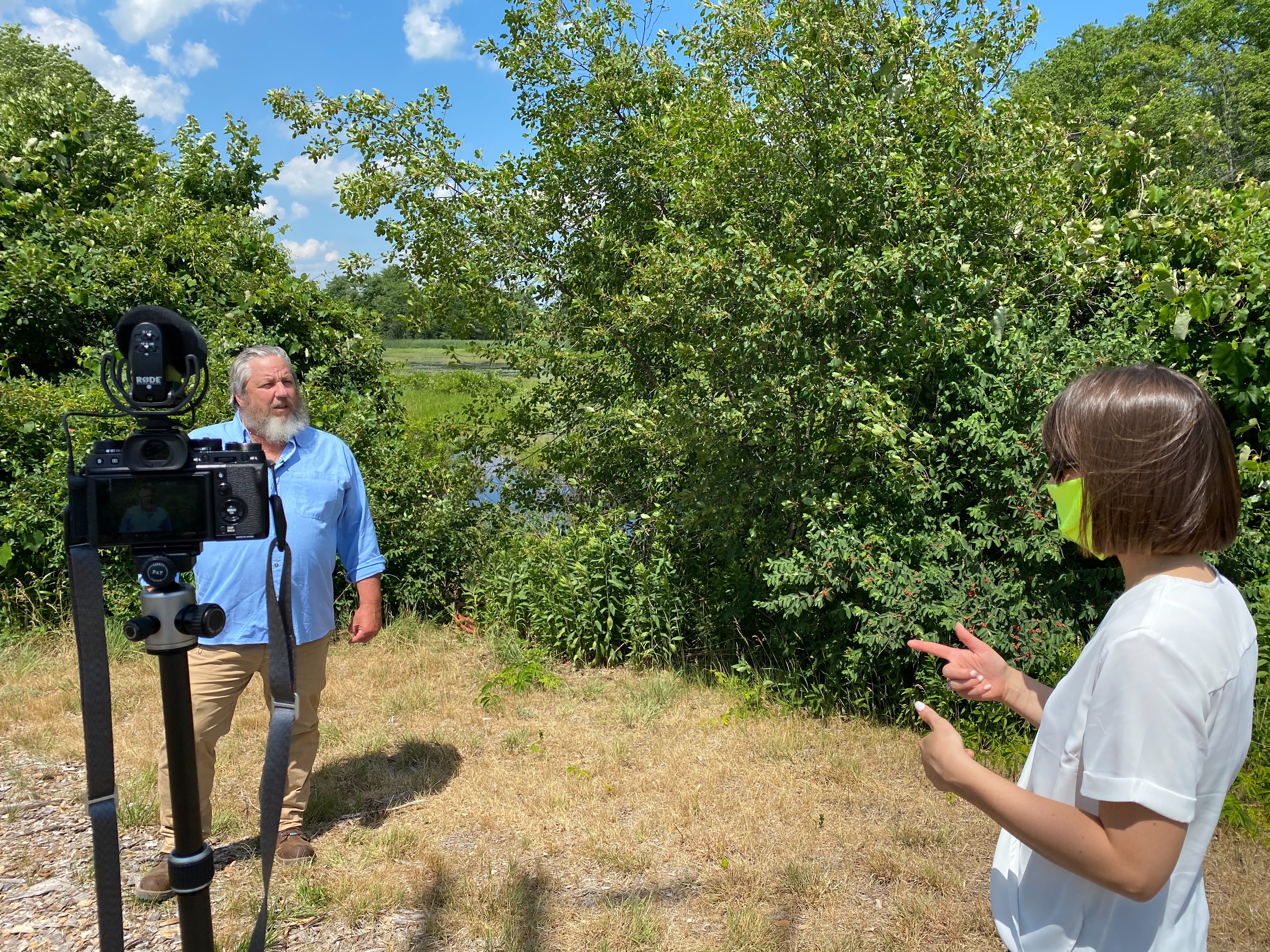
Trees have been Bob’s passion and career for more than 40 years. Why does he love them so much? The answers are myriad, but one reason is that their stature and grace is a marvel. He explained: “Every day when we’re going through our life and our daily rituals, we go to work and come home, and trees are there, the biggest thing we’re gonna deal with in nature on any given day. They’re larger than us, and they’ve been here before us. They gonna live longer than us, but they really don’t ask much from us.
“They just give—they give us clean air, they give us beauty. Some give us fruit. For those of us that burn firewood, they give us the energy to do that, to keep our houses warm. They grow from a seed that’s dropped from the mother tree, and it just makes its way to become this: a hundred-year-old, hundred-foot-tall tree, which grew without anybody helping it, without it ever asking for anything. That’s amazing.”
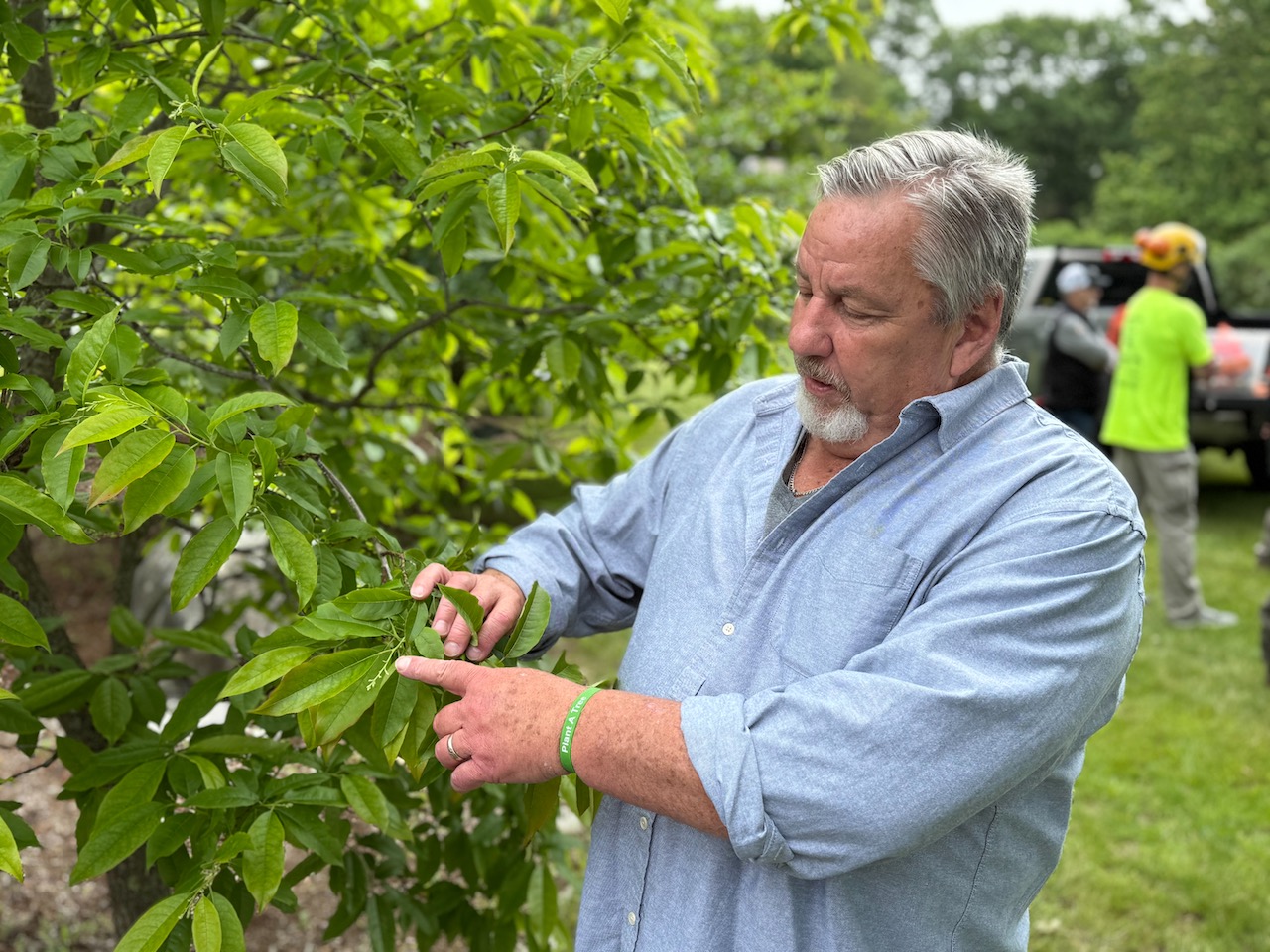
It’s tough for Bob to name a favorite tree; truth be told, it’s probably whichever tree his eyes land on in the given moment. Today, it’s the Sourwood, one of which is planted at the Portsmouth arboretum. “It’s a real four-season tree,” he said. “It’s beautiful all year long.” He explained that sourwoods are green in the spring, and flower in late summer. By fall the leaves are burgundy, and display their seed structure in the winter. “It’s a graceful tree. Did you know sourwood honey is a delicacy in Georgia?”